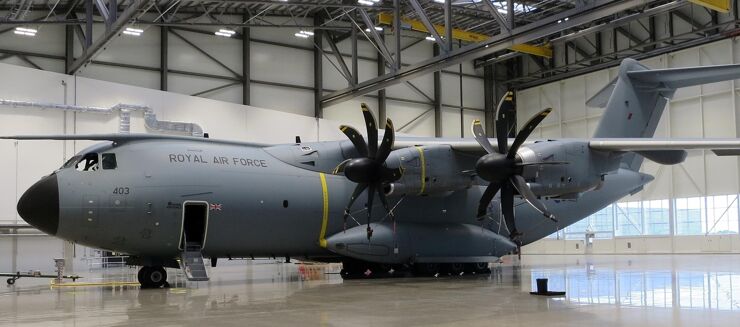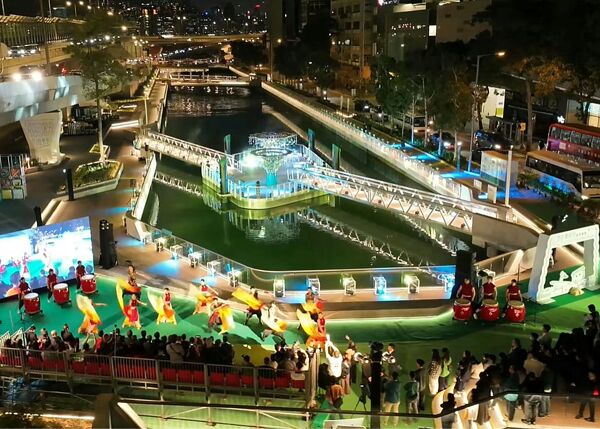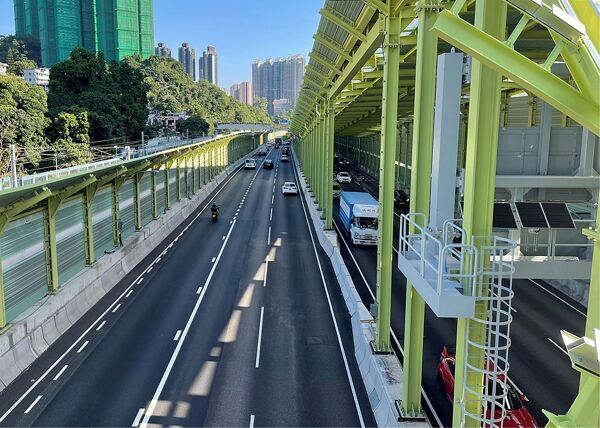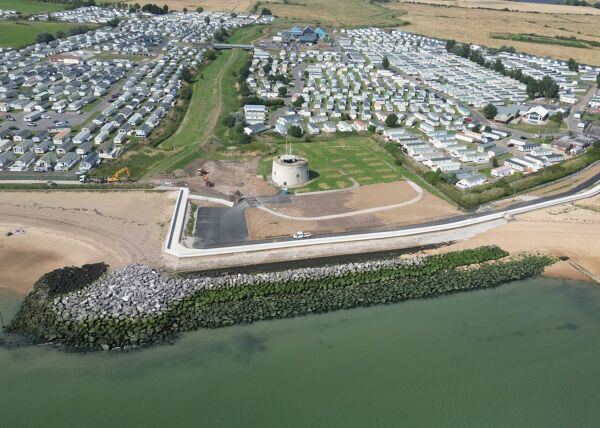
The UK government has used NEC to procure a state-of-the-art maintenance hangar for the Royal Air Force’s new fleet of 22 Airbus A400M Atlas transport aircraft, which are entering operational service between 2015 and 2021.
The Defence Infrastructure Organisation (DIO), part of the government’s Ministry of Defence, let the design and construction to Balfour Beatty in January 2015 through its NEC-based National Capital Works Framework under a £42 million NEC3 Engineering and Construction Contract Option A (priced contract with activity schedule). DIO was project manager, supported by WYG (now part of Tetra Tech).
Located at RAF’s main transport base at Brize Norton in Oxfordshire, the large three-bay steel-frame building measures 130m long, 147m wide and 28m high. Together with workshops, stores, welfare facilities and a three-storey office wing, it has a total floor area of 22,000m2.
Its curving, composite-panel-clad roof is supported over the bays by nine main steel lattice trusses, which are up to 67m long, 10m deep and 90t in weight. Overall the works included 3200t of structural steelwork, 8200m3 of rainwater attenuation tanks, six 5t overhead gantry cranes, five rail-mounted sliding doors, extensive concrete aprons and 600 m2 of photovoltaic panels.
The completed building was handed over on time and budget for fitting out by Defence Equipment and Support in September 2016 and was officially opened in February 2018. It is now operated by Airbus Military, which provides the Maintenance and Repair Organisation for the A400M fleet.
Collaborative Working
DIO project manager Denis Williams says one of the main benefits of NEC was the collaborative working ethos fostered by the contract suite’s obligation to work in a ‘spirit of mutual trust and co-operation’. ‘NEC’s defined procedures to manage change and resolve potential issues in a specified time frame during construction also helped to ensure a successful outcome.’
He says collaboration started during the tender stage, with close partnerships established between DIO and the contractor’s key suppliers for steelwork, concrete and building services. ‘It was all about planning and collaborative working, with a genuine commitment to provide high quality facilities and a good working environment. This was reflected in the high scores achieve under the Considerate Contractors’ Scheme.’
He concludes, ‘It was a challenging project, especially given that construction work took place close to a live runway and within an operational RAF base with all the associated security requirements. From the beginning we adopted a collaborative single-team approach, and it paid off. I am extremely proud to have played my part in making it happen.’
Building Trust
According to WYG associate director Jeff Davis, ‘NEC worked very well in practice. The project, being tucked in between a taxiway and close to the main runway on a very active military airfield, required relentless communication between all stakeholders to achieve success. Multiple permissions were needed from the base to progress the work while minimising disruption to airfield operations, so building trust and confidence was paramount.’
Davis says the NEC principles of collaboration, early warnings and risk reduction meetings were adhered to on both informal and formal levels on a daily, weekly and monthly basis. ‘The work put in by the client and contractor to build a collaborative atmosphere right from the start was exemplary. Relationships throughout the contract were generally very good, not just between the parties but also with the various base representatives, such as radar, air traffic control, airfield works, neighbouring facilities and end-user Airbus.’
He says overall there were around 120 NEC compensation events. ‘These were managed in a transparent fashion using proprietary online software and through regular meetings. Generally the compensation events were agreed without much issue and were all successfully resolved before completion.’
Benefits of Using NEC
- NEC obligation to work in a ‘spirit of mutual trust and co-operation’ fostered collaborative working between the parties from the outset, including key suppliers at tender stage.
- NEC collaborative working extended to building trust and confidence with all external stakeholders, which was essential on a live military base.
- NEC’s transparent processes for managing change through early warnings, risk reduction meetings and compensation events ensured timely resolution of issues, enabling the challenging project to be completed on time and budget.



